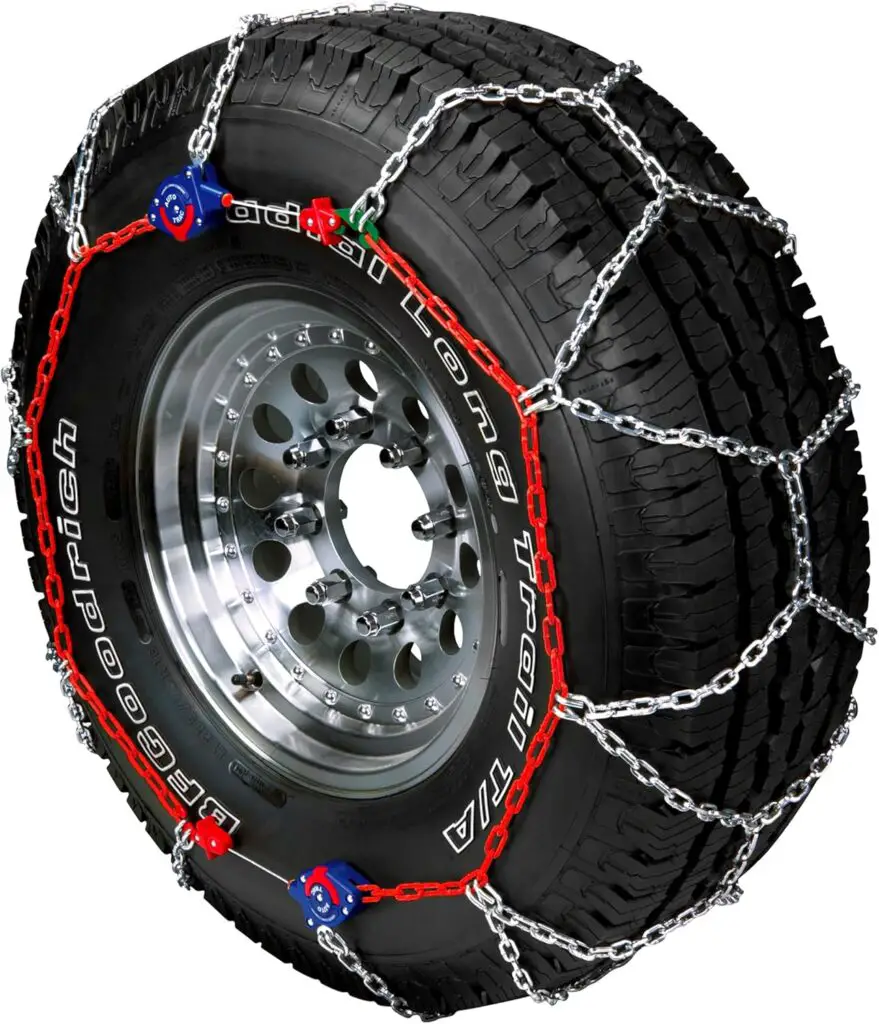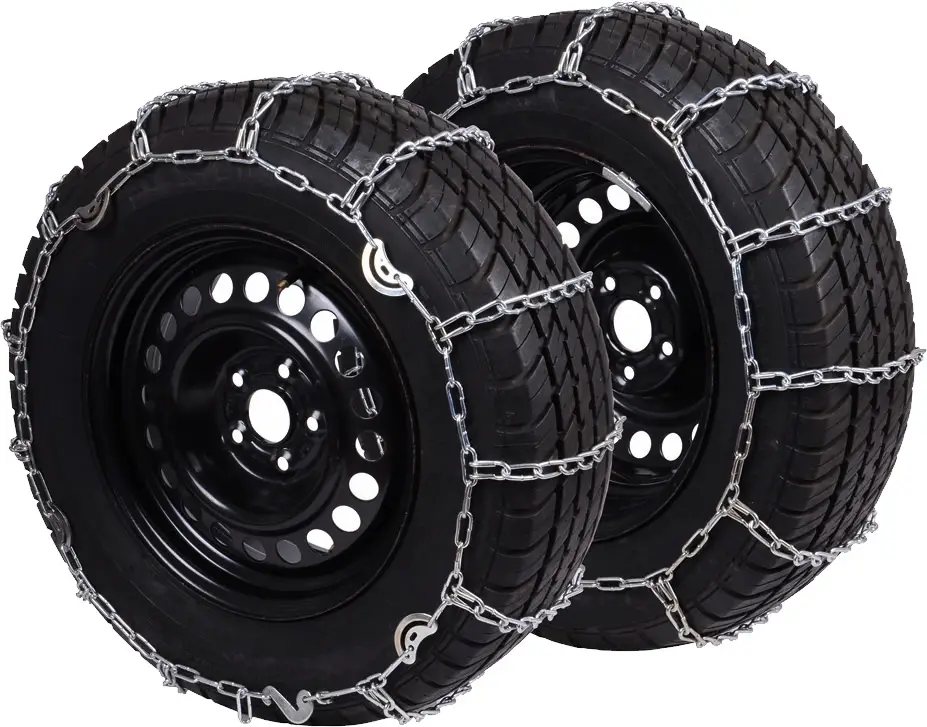Do I need tire chains for all 4 tires? The need for tire chains on all 4 tires depends on your vehicle type and driving conditions. For 4WD or AWD vehicles, it’s recommended to use chains on all four tires for balanced traction, while for 2WD vehicles, chains are typically placed only on the drive wheels.
Winter driving can be hazardous, particularly when the roads are icy, snow-covered, or slushy. One of the most common questions drivers have is whether tire chains are necessary for all four tires, or if just one set will suffice. This is a question that can depend on various factors including your vehicle type, road conditions, and even the regulations in the area where you’re driving.
In this article, we’ll explore the ins and outs of tire chains, when and why you might need them on all four tires, and whether they’re essential for your specific vehicle. By the end of this article, you’ll have a clear understanding of whether tire chains on all four tires are the right choice for you or if you can get by with chains on just two.

Contents
What Are Tire Chains?
Tire chains are devices that are fitted onto the tires of vehicles to provide additional traction on snowy or icy surfaces. They are made from a series of metal links that form a mesh that wraps around the tire, offering better grip on slippery roads. Tire chains are commonly used in places with severe winter weather, such as mountainous regions, and are a vital safety feature for vehicles in such conditions.
While snow tires can offer some help in these conditions, tire chains can provide a significantly better level of traction, especially when the snow is deep or the ice is hard. Depending on your vehicle type, you might need to install tire chains on all four tires for maximum traction, or only on the drive wheels.
Do You Need Tire Chains for All 4 Tires?
When winter conditions make driving difficult, tire chains are often the go-to solution for improving traction on snow and ice. But do you need tire chains for all four tires, or are they necessary only for the drive wheels? Let’s dive into when and why you might need tire chains on all four tires.
1. Vehicle Drive Types
Before determining if you need tire chains on all four tires, you need to know the drive type of your vehicle. The three main types of vehicle drive systems are front-wheel drive (FWD), rear-wheel drive (RWD), and all-wheel drive (AWD) or four-wheel drive (4WD). Your vehicle’s drive type plays a significant role in determining how many tires need chains.
Front-Wheel Drive (FWD)
In front-wheel-drive vehicles, the engine’s power is transmitted to the front wheels. These are the wheels responsible for both steering and driving the vehicle. In most cases, if you are installing tire chains on a FWD vehicle, it’s recommended to place the chains on the front tires. This will provide traction to the wheels that are doing the majority of the work.
Rear-Wheel Drive (RWD)
For rear-wheel-drive vehicles, the engine powers the rear wheels. In snowy or icy conditions, putting tire chains on the rear tires is essential to ensure proper traction. This is because the rear wheels are responsible for moving the vehicle forward.
All-Wheel Drive (AWD) and Four-Wheel Drive (4WD)
For vehicles with AWD or 4WD, power is distributed to all four tires. Because these vehicles already have improved traction, it is often recommended to install tire chains on all four tires for maximum grip. This ensures balanced traction, which is particularly important when driving on challenging winter roads.
2. Driving Conditions and Terrain
Another important factor in deciding whether to use tire chains on all four tires is the driving conditions. If you live in an area that experiences heavy snowfall or icy roads, it’s crucial to have tire chains on all four tires. This is especially true if you are traveling in mountainous or hilly terrain where traction is key to keeping the vehicle stable.
If the roads are icy or snow-packed, chains on all four tires provide better overall traction, stability, and control. Using tire chains on only two tires (typically the drive wheels) may result in uneven traction, especially on slippery surfaces, which could cause the vehicle to slide or lose control.
For Steep or Hilly Terrain
When driving on steep or hilly terrain, tire chains on all four tires are often recommended. This helps prevent the vehicle from sliding backward or losing traction while climbing hills or descending icy slopes. In these cases, using only two chains might still provide adequate grip, but installing chains on all four tires ensures a higher level of safety.
3. Local Regulations and Legal Requirements
In many regions, tire chains are not just a suggestion—they are a legal requirement in certain weather conditions. Many mountainous states or areas with frequent snowstorms have laws that mandate the use of tire chains under certain weather conditions. In these cases, you may be required to use chains on all four tires, particularly if you are driving a 4WD or AWD vehicle.
For example, in California, there are chain control laws that specify when chains are required on vehicles. Under R2 or R3 conditions, which are severe winter weather situations, chains are required on all tires of a 2WD vehicle, and for 4WD/AWD vehicles, chains are required if the vehicle does not have snow-rated tires on all four wheels. It’s important to check the local laws of the area you’ll be traveling to ensure you’re following the correct guidelines.
Related Article
Colorado Snow Chain Requirements

Pros and Cons of Using Tire Chains on All Four Tires
Using tire chains on all four tires can provide significant benefits in terms of traction and stability, especially in severe winter conditions. However, there are some trade-offs to consider, such as potential discomfort and increased wear on your tires. Let’s break down the pros and cons of using tire chains on all four tires.
Pros
- Increased Traction: When tire chains are placed on all four tires, your vehicle will have improved grip, even in the harshest conditions.
- Enhanced Stability: The extra traction provides greater stability, especially when driving on icy or snow-covered roads.
- Better Control: Balanced traction from all four tires ensures more even handling, preventing one side from slipping.
- Meets Legal Requirements: In some areas, using chains on all four tires might be necessary to meet legal requirements, avoiding fines.
Cons
- Increased Cost: Purchasing chains for all four tires can be more expensive than just purchasing two sets for the drive wheels.
- Rougher Ride: Tire chains can make the ride less smooth and may cause additional noise and vibration while driving.
- Potential Tire Wear: If chains are not used properly or driven on dry surfaces, they can cause damage to the tires and the chains themselves.
- Inconvenience: Installing and removing chains on all four tires can be time-consuming and may not be necessary in every situation.
How to Install Tire Chains on All Four Tires
If you decide to install tire chains on all four tires, it’s important to do it correctly to ensure safety and effectiveness. Here’s a simple step-by-step guide to help you install tire chains on all four tires:
- Choose the Right Chains: Ensure that the tire chains are the correct size for your tires. Check the owner’s manual for the appropriate chain size and type.
- Lay Out the Chains: Before putting the chains on, lay them out flat on the ground to avoid any tangles.
- Position the Chains: Drape the chains over the top of the tire, ensuring they are evenly spaced.
- Secure the Chains: Start securing the chains at the top and work your way down the tire, making sure the chains are snug but not overly tight.
- Repeat for All Tires: Repeat the process for all four tires, making sure the chains are properly secured on each tire.
Alternatives to Full Tire Chain Coverage
While tire chains provide the best traction in severe conditions, there are alternatives you might consider. Some of these alternatives are more convenient, while others might not offer the same level of grip.
Snow Socks
Snow socks are an alternative to tire chains. They are textile covers that slip over the tire and provide traction. They are easier to install and remove compared to chains but may not offer the same level of grip in deep snow or ice.
Tire Traction Mats
Tire traction mats are another alternative. These mats are placed underneath the tires to help get vehicles unstuck from snow or ice. While they’re useful in emergencies, they are not a long-term solution for driving in deep snow or ice.
Studded Tires
Studded tires feature metal studs embedded in the tread, providing excellent traction on icy roads. However, they’re not legal in all areas, and they can cause road damage if used on dry or clear roads.
Frequently Asked Questions
Here are some FAQs about the necessity tire chains for all 4 tires –
1. Do I Need Tire Chains for All 4 Tires?
While it’s not always necessary to use tire chains on all four tires, in certain conditions (such as severe snow or ice) and for certain vehicles (like 4WD or AWD), it is recommended to use them on all four tires for maximum traction and control.
2. Can I Use Tire Chains on Dry Roads?
No, tire chains should never be used on dry roads as they can damage both the chains and your tires. They should only be used on snow and ice-covered roads.
3. How Fast Can I Drive with Tire Chains?
It’s generally recommended not to exceed 30 mph (48 km/h) when driving with tire chains. Driving faster can damage both the chains and the tires and reduce their effectiveness.
4. Can Tire Chains Be Used on All Types of Tires?
Tire chains are suitable for most tire types, but always check the manufacturer’s recommendations. Some tires may have a limited clearance for chains, and using them could cause damage.
5. Where Can I Purchase Tire Chains?
Tire chains can be purchased at most auto parts stores, online retailers, and even at some large retailers. Make sure to select the right size for your tires and vehicle.
Conclusion
Deciding whether or not to use tire chains on all four tires largely depends on the vehicle, driving conditions, and local laws. While it’s not always necessary to chain all four tires, it can provide extra safety, stability, and traction, particularly in severe winter weather.
Be sure to check your vehicle’s manual, follow local regulations, and install the chains properly for maximum effectiveness. By preparing for winter weather and knowing when and where to use tire chains, you can help ensure a safer and more confident driving experience.